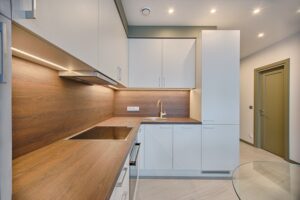The down payment required from borrowers by lenders, investors and banks is a major hurdle to buying a rental property Before lenders can approve your investment property mortgage application, they expect you to be able to pay part of the home’s purchase price upfront.
This upfront payment is called the down payment. Lenders determine how much the money is going to be. Unless lenders see proof that you actually have this money, they will not approve your loan.

Why do Rental Property Lenders require a Down Payment?
Lenders require down payments to protect themselves. The down payment reduces the risk the bank is exposed to in the transaction. This is because, by paying part of the home’s purchase price, the borrower also acquires a stake in the property.
Since their own money is invested in the home, borrowers now have an incentive to take better care of the property and ensure the investment’s success.
What Borrowers Must Show Lenders
Borrowowers must demonstrate:
- Financial discipline: Borrowers demonstrate this by making an effort to save up for a down payment
- Trustworthiness: They must also show they can be trusted to manage a property investment.
- Investment: Borrowers who have invested some of their own money in a property are less likely to default on mortgage payments.
In the event that a loan goes bad and the lender has to sell the asset, they are assured of recovering the mortgage balance. This is true even if the home sells for less than its purchase price.

Down Payment Lender Requirements on Rental Properties
There are two factors that determine how much a lender will require from borrowers as a down payment for an investment property loan: the number of rental units in the building and whether you will be living in the building or not
1. Number of rental units
The number of rental units in an investment property is used to determine if the building should be zoned as residential property or commercial property. Although the focus of this article is on residential properties, it is still necessary to explain the difference between them.
Residential building
These are buildings with 1 to 4 rental units in them. Mortgage requirements for rental properties classed as residential are tougher than the loan terms for your primary residence. But they are easier than the terms for a commercial property mortgage.
Commercial building
If a building has five or more units, it is a commercial property. The qualification criteria for these types of property are a lot harder. When buying a commercial building, such as a multi-family property, expect the following factors to occur:
- Higher interest rates & appraisal costs
- Banker’s fees
- A longer closing period

2. Owner-occupied versus non-owner occupied
The second major factor which determines how much lenders will require from borrowers as a down payment is whether you will live in one of the units in the building or not. Lenders view a rental property loan as less risky if the investor is also going to live in the building.
This is because borrowers typically pay more attention to mortgage payments for their primary home than payments for a rental property. When the owner lives in the rental property, they tend to treat it the same way they would their primary residence.
Below are the down payment rates for residential properties based on the number of units they contain and their owner occupied status.
- Owner-occupied rentals with 1-2 units: These attract a minimum down payment of 5%; that is a maximum LTV (loan-to-value) of 95%.
- Non-owner occupied rentals with 1-2 units: minimum down payment for the property will be 20%; maximum LTV of 80%.
- Owner-occupied rentals with 3-4 units: The down payment will be 10%; maximum LTV of 90%.
- Non-owner occupied rentals with 3-4 units: The minimum down payment will be 20%; a maximum LTV of 80%.
In summary, landlords who plan to live in the residential building they are borrowing to buy should expect 5-10% of the purchase price of the property as a down payment.
For landlords who do not intend to live in one of the units of their building, the minimum down payment is 20%, regardless of the number of units in the property.

Important Details When You’re Borrowing
Calculate the purchase price of the home
For investors whose building is owner-occupied, the 5% minimum down payment only applies if the purchase price of the home is $500,000 and below. If the building costs more than $500,000, the investor will be expected to put down 5% on the first $500,000; 10% on the balance, up to $1,000,000; and 20% for any balance above $1,000,000.
Mortgage insurance
Mortgage insurance helps to offset the risk to a lender when the borrower makes a lower down payment. Mortgage insurance is required for all down payments below 20%. Investors who pay 5-10% down will save money on the upfront cost of their building, but their monthly payments will be higher than the monthly payment of investors who pay 20% down.
Applying for a loan for a rental property, use my easy, secure, online loan application form.

